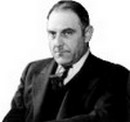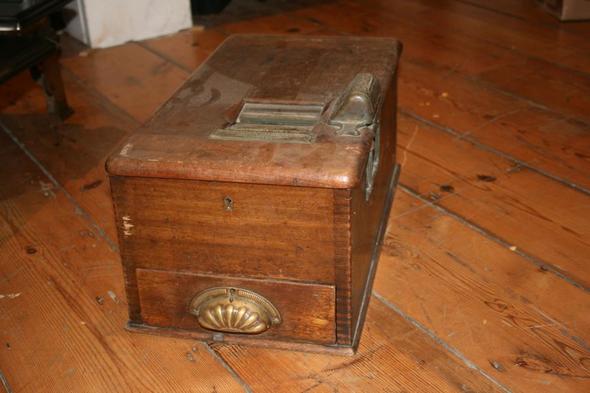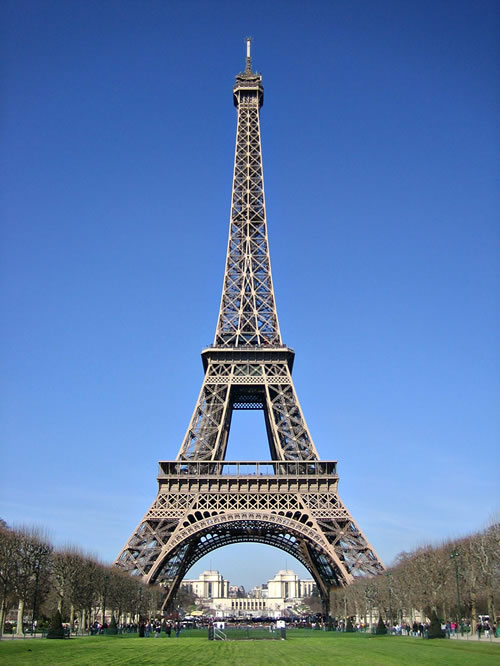Wouldn’t it be great if you could pick any building in the world and sell it with out having to own it?
Well, that’s what Victor Lustig did in 1925. He sold the Eiffel tower, not just once, but twice within two months!!!
To understand how he did that, we have to know a bit about Victor Lustig.

Victor discovered his talents to charm and persuade while still a young man. He spoke multiple languages and people liked him. Pretty soon he could talk his way into almost anything. He started with small scams for pocket change and quickly developed a taste for it. He sharpened his skills to the point where he evolved into a smooth talking, confidence man. In order associate himself with wealthy people, he began frequenting the same places as they did. One of which was on the ocean liners between Europe and America. Onboard, he would pose as a free spending, wealthy businessman. He would quickly make friends among the passengers and seek out the wealthiest and most vulnerable to his scams. When his new friends felt comfortable with him and the talk turned to money, he would grudgingly reveal the secret of his wealth, his “money box”. The money box was a skilfully crafted mahogany box with brass dials and internal rollers which he claimed could duplicate hundred dollar bills. He demonstrated by inserting a real bill along with a paper blank into slots at one end of the box and then, after a six hour “chemical reaction” time, he would pull two real bills out of the other end.

Victor Lustig’s Money Box
This kind of scam requires a lot of psychology and Victor was excellent at sizing up his marks.
He felt it was much better to soak one sucker for a lot then many suckers for a little. By the end of the voyage he could tell which people were vulnerable to his charms and easier to scam. Then he would offer the box for sale and, as they had seen the ships purser accept the bills and vouch for their authenticity, a bidding war would usually ensue. He would inevitably part with the box just before disembarking from the ship for about $10,000 but one time he reaped an enormous profit of $25,000, about $250,000 in today’s money value.
How did the trick work? He had loaded several real bills into the box for demonstration purposes and the six hour time for the chemical reaction was simply to provide enough time for a clean getaway. By the time the victim discovered the truth, Victor was long gone.
Growing bored with this scam or perhaps sensing an end to the easy pickings, he went to Paris to formulate another scam. At the time, Paris was the center of the civilized world, buoyed with a new sense of optimism and opportunity as it emerged from the dark years following world war one.
One morning, while enjoying a cup of coffee at his favourite sidewalk café, Victor read a newspaper article regarding the debate raging around the maintenance costs of the 36 year old Eiffel tower.

The tower was constructed in 1889 for the Paris Exposition and was 11 years past its projected lifespan. It was so different from the other historic buildings in Paris that it stuck out on the skyline like, well, a rusty, metal tower. Parisians were polarized about its future. Many Parisians felt it was an eyesore and out of place with the great classical buildings of the city and should be torn down, others saw it as an icon. Another problem was that the tower was beginning to rust and the maintenance bill was a drain on the cities coffers. Paris city council was torn and the citizenry divided. And when opinions divided, Victor saw a chance to conquer.
Thinking as only a conman can, he devised a scheme to make a bit of money and do the impossible, sell the tower.
He forged some business cards and stationary and called himself “Deputy Director of the Ministere de Postes et Telegraphes”. Then he sent out letters to six of the cities largest scrap dealers and invited them to a meeting to discuss confidential business. He picked one of the fanciest hotels and wined and dined them to the standard that Victor himself had become accustomed. Stressing the need to maintain silence and keep the discussion out of a public forum, he disclosed to the dealers that the decision to scrap the tower had been made. Their bids were required so the city could determine the true cost of the savings and make the case for the demolition to the public. One of them would obtain the contract to dismantle and sell the tower if they presented their bid within four days.
He was very convincing as he took the contractors on a limousine tour of the site. Then, Victor discussed the details with each one separately. He wanted to make sure they all had the same opportunity and more importantly, which one was most likely to take the bait. One man stood out among the others as a bit of a rube. Andre Poisson was fairly new to the Paris business scene and wanted to earn a reputation. Victor judged him as the most vulnerable to be scammed. When Andre asked questions and seemed suspicions, he took him aside and confessed how the paltry wages he made as a public servant didn’t match his responsibilities and hinted at a bribe. Surprisingly, this put Andre at ease as bribery was common in these types of deals in Paris, and, after all, no con man would ask for a bribe would he? A few not so subtle hints later and Andre was offering a bribe of $20,000 to obtain the contract. The next day, Andre delivered to Victor $20,000 cash plus $50,000 for the Eiffel tower itself. Within an hour Victor was on a train to Vienna with his suitcase full of money.
Victor watched the Paris papers for the story of his fraud to break but to his amazement, after a month, it had not been reported. Apparently, Andre was too embarrassed to mention the episode and reveal it for public scrutiny and ridicule. Never one to rest on his laurels, Victor decided to give it another spin and returned to Paris. He called six different scrap dealers and tried the same scam. Unfortunately, this time one, of the dealers did a bit of investigating and alerted the police.
Victor escaped by the skin of his teeth and fled back to America where he contented himself to scamming Americans of all classes and occupations, including a crooked sheriff in Oklahoma which purchased one of his money boxes. Of course, the box quickly ceased to deliver money and the sheriff realized he had been scammed. The sheriff tracked Victor to Chicago and stuck a gun in his face and arrested him. Ever the smooth talker, he blamed the machine’s failure on the sheriff’s inexperience and incorrect settings. To gain his freedom though, he gave back the sheriff’s $10,000 and was released. Unfortunately for the sheriff, the money was counterfeit and the sheriff was arrested on Bourbon Street in New Orleans for passing phoney hundred dollar bills. The sheriff spent several years in jail and never got to extract his vengeance on Victor Lustig, but like most scam artists, Victor was eventually caught and sentenced to jail.
In 1947 he died while incarcerated in Alcatraz prison.
So how do you sell the Eiffel tower? Well, first you have to have unshakable confidence. Then you have to make up a lie so preposterous, crazy and over the top that no one would think it’s a scam, then you have to appeal to their greedy nature and stick to your story while picking their pocket.
It’s just that easy!
Written by Eric J. Pittman – Copyrighted © www.weirdworm.net Image Sources
Image sources: – http://www.buzzle.com/img/articleImages/101520-9.jpg – http://www.salvo.co.uk/images/userimgs/10756/35577_1.jpg – http://www.thetravelpeach.com/europe-vacations/france/eiffel-tower.jpg







